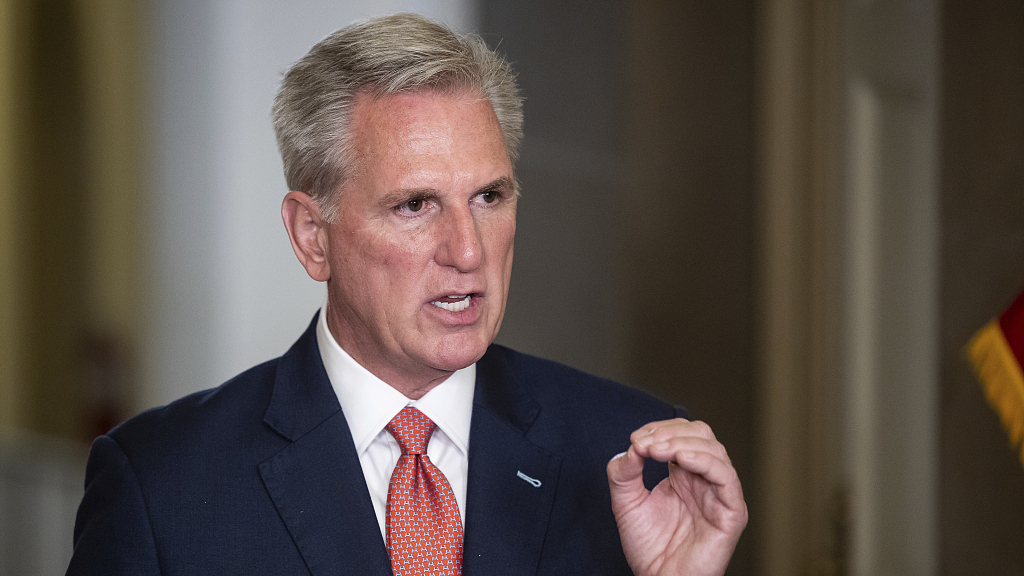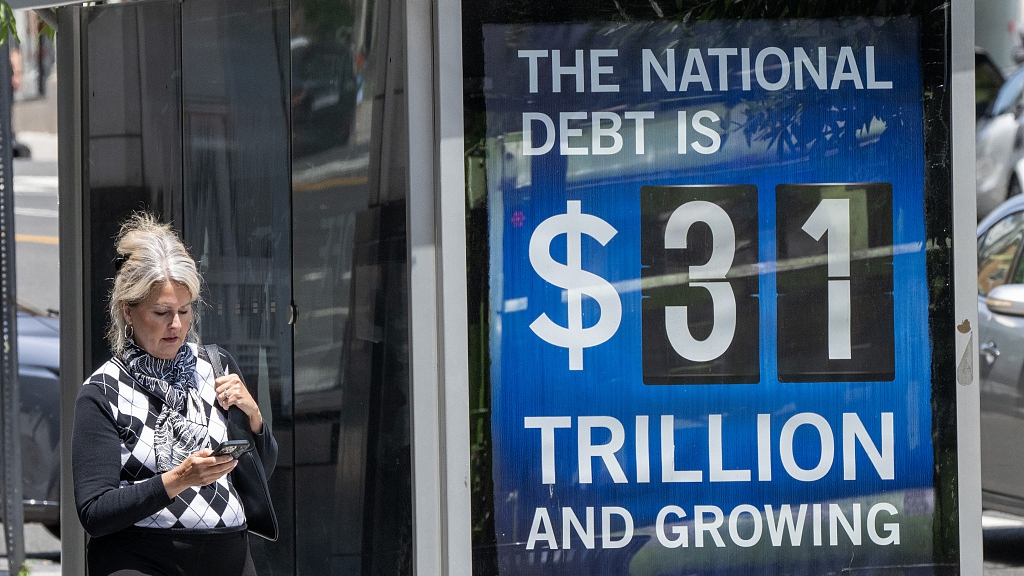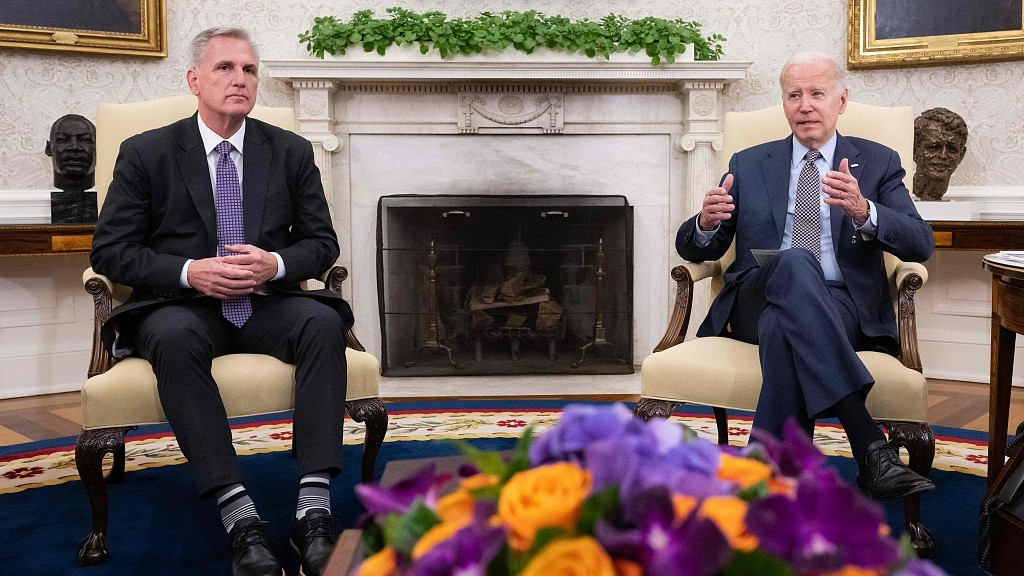Although House Speaker Kevin McCarthy clapped with a victorious smile after the House passed the debt limit deal, the 99-page bill would only allow the federal government to borrow money until after the next presidential election in November 2024 – if passed by the Senate. So, the U.S. debt crisis ticking bomb has only been postponed, not solved.
After getting a debt ceiling agreement, the U.S. government still has a cash flow problem. And the deal is only the first step in saving the government from the brink of illiquidity. And guess what, the Democrats paid a high price to extend the debt ceiling by two years, which will be felt for the next decade by the American people and their economy.

House Speaker Kevin McCarthy (R-Calif.) speaks with reporters at the U.S. Capitol after returning from a meeting with President Biden and other congressional leaders at the White House to discuss the debt ceiling, May 16, 2023. /CFP
House Speaker Kevin McCarthy (R-Calif.) speaks with reporters at the U.S. Capitol after returning from a meeting with President Biden and other congressional leaders at the White House to discuss the debt ceiling, May 16, 2023. /CFP
What the Democrat-controlled White House and Congress are fighting over whether to raise or cap America's debt limit is essentially about how much the U.S. government can borrow to pay its bills. In fact, the U.S. Treasury has been borrowing money to make ends meet for the past two decades. Since 2001, the U.S. government has been running on an annual deficit. Usually, that isn't a problem, but it does mean a large amount of the government's spending is from credit.
According to the U.S. Constitution, any borrowing must first be approved by Congress, and the debt ceiling has been a marker for how much the government can borrow since 1917. The debt limit was created to give the Treasury autonomy regarding borrowing, originally making it easier to finance mobilization efforts in WWI, and later, simplifying the government's financing.
But as the U.S. got itself involved in more and more wars abroad, it began to accumulate more debt as well. Since 1960, Congress has raised the debt limit 78 times. And in the last two decades, the U.S. has added $25 trillion in debt to finance wars, tax cuts, emergency responses, and expanded federal spending.

A sign keeps track of the U.S. debt, now at $31 trillion, in downtown Washington, D.C., U.S., May 30, 2023. /CFP
A sign keeps track of the U.S. debt, now at $31 trillion, in downtown Washington, D.C., U.S., May 30, 2023. /CFP
And now, the U.S. is the fourth developed country with the highest debt burden. Its debt-to-GDP ratio is as large as 144 percent, exceeded by Japan, Italy and Greece, followed by Spain.
Yet over time, this ballooned national debt met another challenge on Capitol Hill. In 2011, the debt ceiling was effectively "weaponized," as the Republican-controlled House played hardball with the Democrats in the White House and Senate over the debt limit issue. This year, as the U.S. hit the debt ceiling in January, a near-carbon copy standoff is playing out now as House Republicans argue for sweeping spending cuts.
But the risk for what they are doing is prohibitive – upheaval in the global economy, plunging stocks and bonds, and much more. The once safest investments and the bedrock of the global financial system are on the brink of collapsing, just because raising the debt limit has become an increasingly political issue on Capitol Hill, and power in Washington is divided more than ever.

U.S. House Speaker Kevin McCarthy (R-CA) (L) looks on as U.S. President Joe Biden speaks during a meeting on the debt ceiling, in the Oval Office of the White House in Washington, D.C., U.S., May 22, 2023. /CFP
U.S. House Speaker Kevin McCarthy (R-CA) (L) looks on as U.S. President Joe Biden speaks during a meeting on the debt ceiling, in the Oval Office of the White House in Washington, D.C., U.S., May 22, 2023. /CFP
People like to describe a U.S. debt default as "the mother of all crises" since its spillover can ricochet around the world. Yet, the standoff over the debt ceiling has now turned into a game of chicken. In the current version, when they were trying to reach a deal, the Biden administration and congressional Republicans wanted the other to blink first and avoid a horrific default on federal government debt.
The welfare of American households and individuals become the handy bargaining chips of the politicians on Capitol Hill, who are even willing to hold the world economy hostage to make their political point.
Let's just hope the U.S. debt-crisis ticking time bomb will never explode, the economic calamity that Ms. Yellen is talking about will never happen, and there won't be another financial crisis when politicians in Washington eventually "blink."